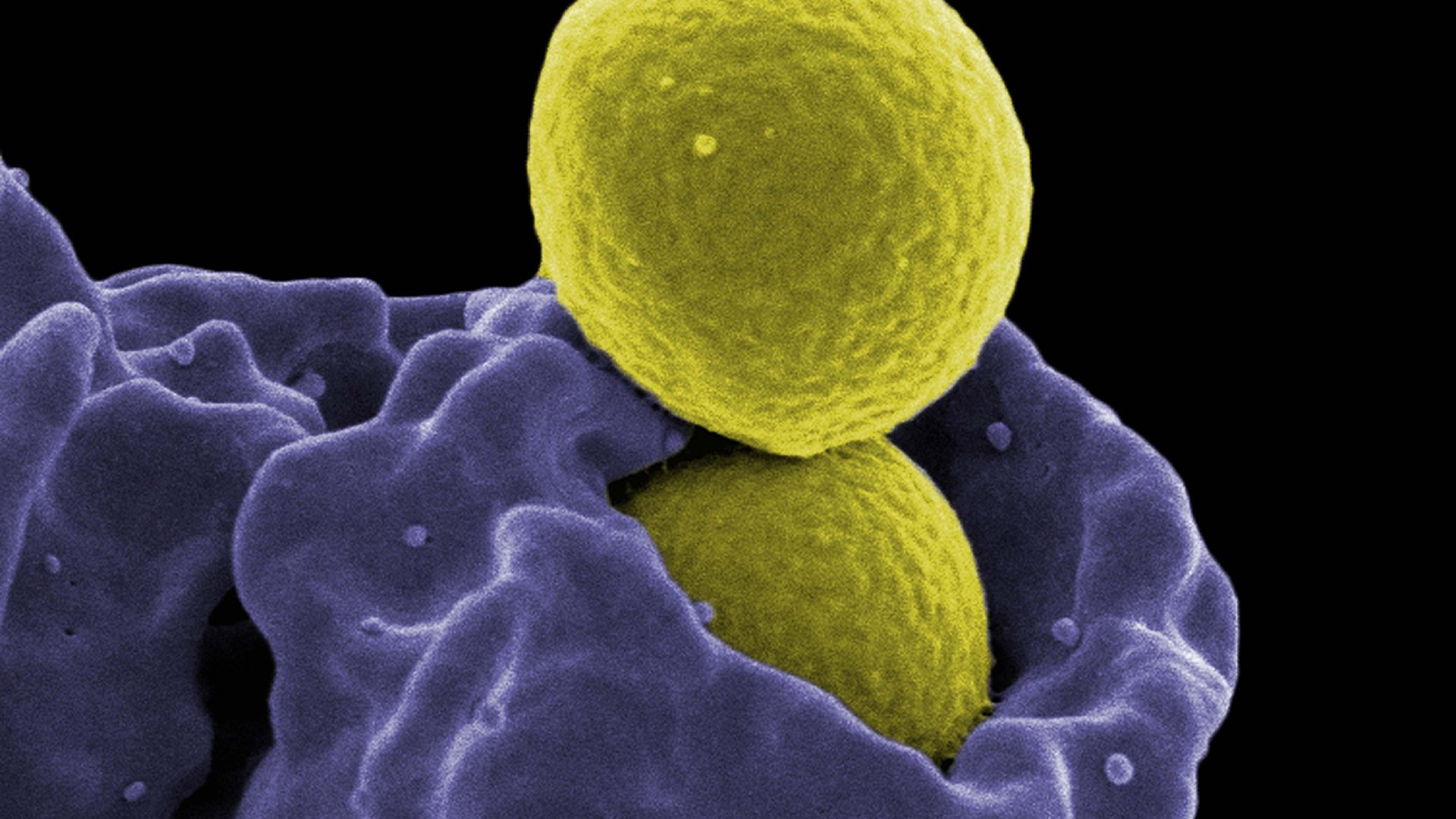Staphylococcus aureus is found in our airways and on our skin. This bacterium does not cause illness under normal circumstances. However, it can result in infection when given the chance.
Staphylococcus aureus is found in our airways and on our skin. This bacterium does not cause illness under normal circumstances. However, it can result in infection when given the chance.
Watch out
Staphylococcus aureus grows best in an aerobic (oxygen-rich) environment but it can also live in anaerobic conditions (without oxygen). The bacterium has a diameter of about 0.8 µm, 60 times smaller than a hair’s breadth. S. aureus is termed an opportunistic pathogen. It is not dangerous under normal conditions. However, if given the chance, for example when the skin or mucous membrane is damaged, it can take advantage of the opportunity and cause an infection, sometimes with serious results. S. aureus can also cause food poisoning.
Precautions against S. aureus
Fortunately, we can take precautions against S. aureus. It is sensible to wash your hands regularly, especially after sneezing and before cooking. Too much soap, though, is not advisable. Soap reduces the acidity of your hands, making it easier for S. aureus to survive than its more benign relation Staphylococcus epidermidis. You need S. epidermidis because it produces enzymes which reduce the growth of S. aureus.
The infamous MRSA bug
The MRSA ‘hospital bug’ is the most infamous strain of S. aureus. MRSA stands for Methicillin-Resistant Staphylococcus Aureus. This bacterium can survive (is resistant to) most antibiotics and this makes it difficult to combat. MRSA is called the hospital bacterium because that is where it is mostly found. This is because a lot of antibiotics are used in hospitals.

